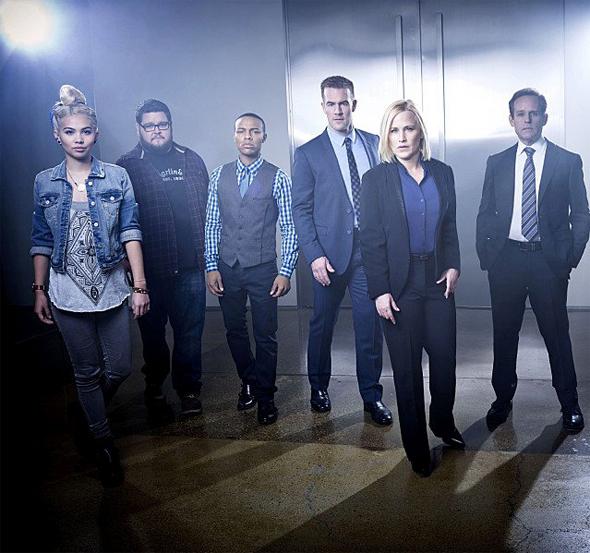Right away, before anything else, I want to say that CSI: Cyber is not the worst. It definitely has some accuracy issues, but when you think about shows like House and Dexter that took wild liberties in portraying interesting professions, CSI: Cyber is doing all right. The problem is that it’s not really about hacking, because hacking is boring.
The show centers around Special Agent Avery Ryan—played by a stony Patricia Arquette. She runs the FBI’s Cyber Crime division, a team of nerdy, misfit, white-hat hackers that includes James Van Der Beek for some reason. It’s a classic crime-drama setup. There’s even the kind-hearted boss, Assistant Director Simon Sifter (played by Peter MacNicol), who is vaguely on the side of bureaucracy, but has a soft spot for the antics of those crazy kids in Cyber Crime.
Agent Ryan works cybercrime cases because around the “beginning of the Internet,” her behavioral psychology practice got hacked, all the records were stolen, and her patients’ secrets were exposed. She says, “I keep thinking if I could just turn one hacker at a time, nothing like that will ever happen again.” So the whole show is basically premised on a forced conversion vendetta.
But anyway! The pilot, called “Kidnapping 2.0,” raises some important questions about cloud services and the Internet of Things as it tracks a ring of criminals who have been surveilling babies through insecure baby monitor cams, then auctioning the babies off, kidnapping them, and selling them to families overseas.
Since we hear about vulnerabilities and cybercrimes every day in the news now, it seems like CSI: Cyber is debuting at the perfect time. As assistant director Sifter says, “Oh, those poor parents. They buy a baby cam to protect their child, and it’s the very thing that gets him abducted. That is truly horrifying.”
But the same weariness we have with the news cycle will probably spread to this show. Since watching people try to trace malware or crack encryption keys is visually boring (people typing for hours or just a computer executing a command without divine revelations or lucky guesses), the show adds chase scenes, sniper attacks, underwater rescues, and suspect interrogations to keep things moving. But all of that makes it seem like a cybercrime episode of normal CSI, rather than an actual chronicle of how white-hat hacking gets done.
Once the show covers all the big topics, it will probably have to repeat various basic premises with different combinations of compromised devices. It’s only the first episode and a character has already said, “You thought patch-and-pray was going to make this problem go away?” But Americans seem to love formulaic crime dramas, so being repetitive doesn’t necessarily mean the show won’t be popular.
As FBI informant and LulzSec co-founder Hector “Sabu” Monsegur wrote on the Daily Dot, “The premise of reckoning with the reality of cloud vulnerabilities is an awesome one. Unfortunately, Kidnapping’s story disintegrates sooner than you can change the channel.”
There isn’t a lot of incentive to accurately depict technology on TV, because it’s at the same time so familiar to viewers and so limitessly magical. It’s almost too easy to sneak in questionable tech in a believable way. When Agent Ryan dusts for prints, takes a photo of what she finds, and checks it against a database to get an instant fingerprint match—all from her smartphone—that’s probably not realistic. But then there’s a whole other level of fudging when a few of the characters perform virtual autopsies on three shooting victims in an immersive 3-D projection room, essentially a Star Trek holodeck. What? How?
